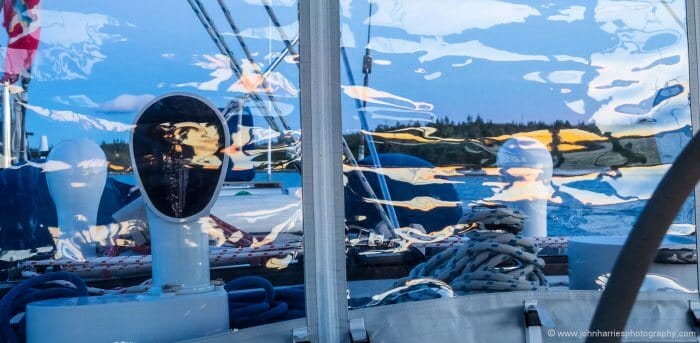
Reflections. There’s beauty everywhere, if we just look.
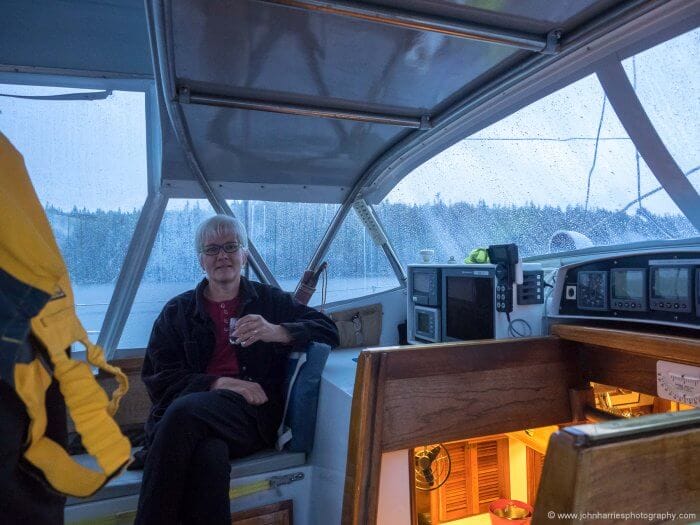
There’s something very special about sitting on a boat warm and dry while it’s wet and cold out.
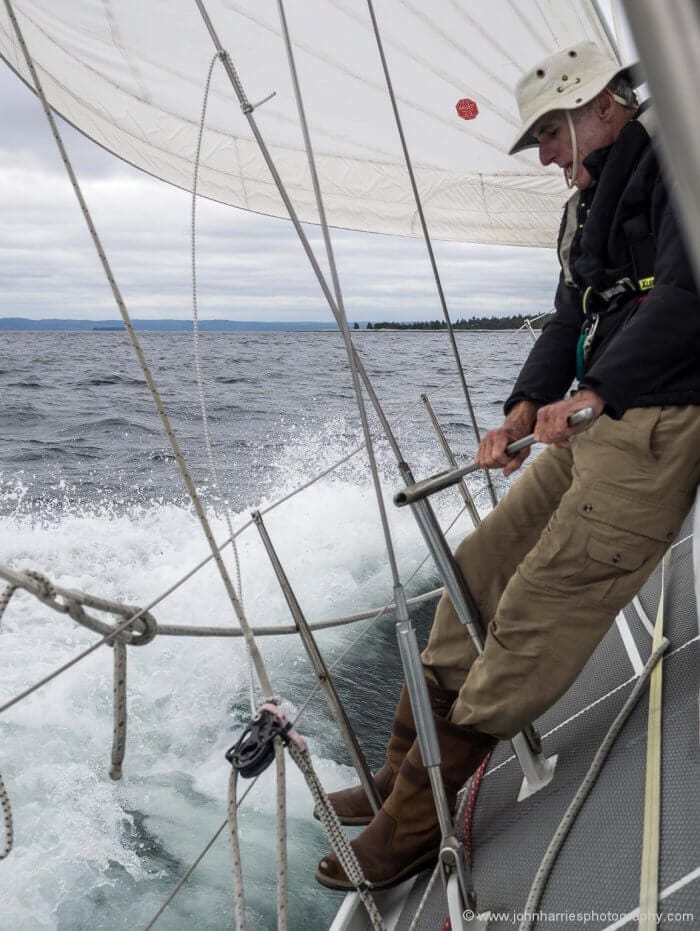
Last sail of the season. De-tuning the rig. A lot easier with the rig loaded up, and easier on the turnbuckles too.
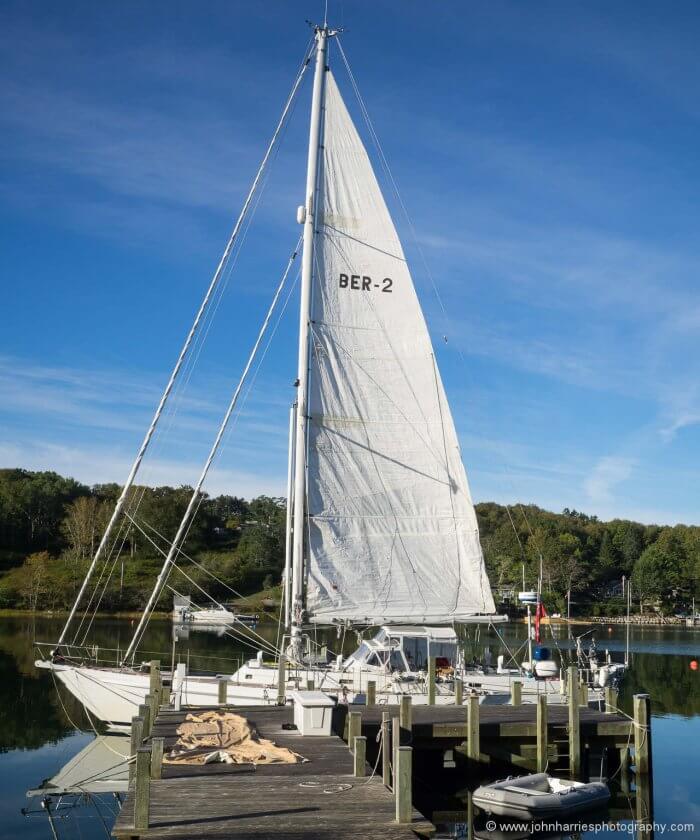
Perfect morning to get the sails dried and un-bent. Loving having our own wharf to do this after decades in places that were not our own.
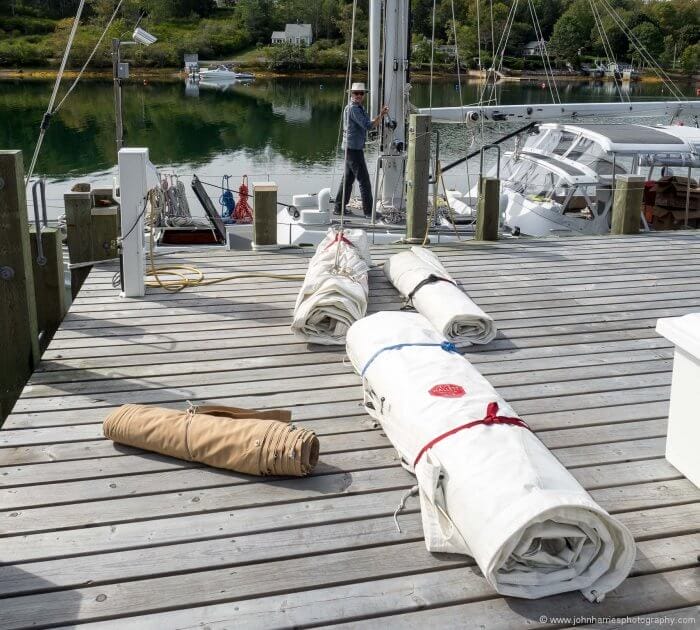
And five hours of hard labour later. Over the years we have learned how to do this whole project, including stowing the sails away, without ever lifting one…at least without assistance from a halyard—heft that mainsail (foreground) and you will know why.
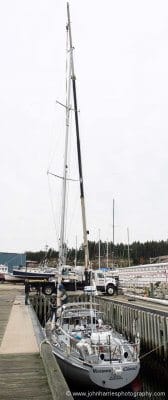
All of the above work leads to my least favourite task in boat maintenance: unstepping the mast. If you too are faced with such anxiety-inducing fun and games this (northern hemisphere) fall, don’t forget that we have nine tips that will help.
Desulphators
I wrote about desulphators a few weeks back. My conclusion was that they probably didn’t work, but I was not sure. We now have some solid science on that in a comment from RC Collins of Compass Marine fame.
I have huge admiration for RC and faith in his findings, which, along with the opinions of Justin (in the original post) and Steve, have now convinced me that these things are not useful.

I like that you used John’s RT&P to call attention to RC’s valuable post to the sulphators article. That’s another good use of the new column.
Hi Michael,
Yes, I agree. Initially I did not think of that use, but now I have I will be highlighting comments that have a big affect on past posts like RC’s.
That’s the nice thing about these posts, they allow me to quickly explore new things that are of use to members.
Interesting idea of detuning the rig while loaded. How are you doing it – detune only one side (which reduces stress on the now-windward side as well when righted), or are you releasing both sides equally? How much while sailing is possible before desaster? 😉
Hi Ernest,
We back off about 2-3 turns each side, first on one tack, then on the other. This is about equivalent to the amount we cranked in when sailing, over and above our dock tune, when setting up the mast.
After backing off that much, the shrouds are only slightly loose hen loaded and still quite tight at rest, so no worries about disaster.
Hei John
Thanks a lot for this lovely pictures and impressions!
Your wharf makes me jealous every time, especially as I live in Switzerland, where waterfront property is always at a premium.
Regrads
Simon
Hi Simon,
Yes, we are very lucky here in Canada to have so much room that it is still possible for someone who is not super-rich to live on the water. Of course it would be even better if the stuff didn’t get solid for four months a year!
John, do you haul out in Nova Scotia or rig bubblers and boards at that wharf? Is there power to it? How tidal is it at that spot?
Hi Marc,
We can’t winter at our wharf because in a harsh winter we can get as much as 2-feet of ice. Bubblers would work, but the potential danger of a gale coinciding with the break up is too high. We saw exactly that happen after the harsh winter of 2014/15 and watching huge ice pans grinding against each other made sure we would not consider wintering there. In many ways this is the primary danger that must be considered in selecting a place to winter in the water in Atlantic Canada.
So I gather you haul out then and block up or resort to jackstands? Or do you simply head farther south to a less-icebound harbour? I’m asking because a Nova Scotia winter is in our future, and while I’ve already contacted CME about a bottom job (it’s about 40% of the price of Toronto, unsurprisingly), there’s a question about whether we’d just stay hauled after that or attempt to overwinter in the water. Part of the charm of Nova Scotia is (say my friends living there) not so much the winter!
Hi Marc,
We have done all of the above. Short version, wintering in the water here is doable but not easy.
Thanks, John. I’ll stand you a Gosling’s for the correct ken should you still be in NS when we get there. There’s not a vast amount of info on the topic, short of Travelifing into a tall shed.